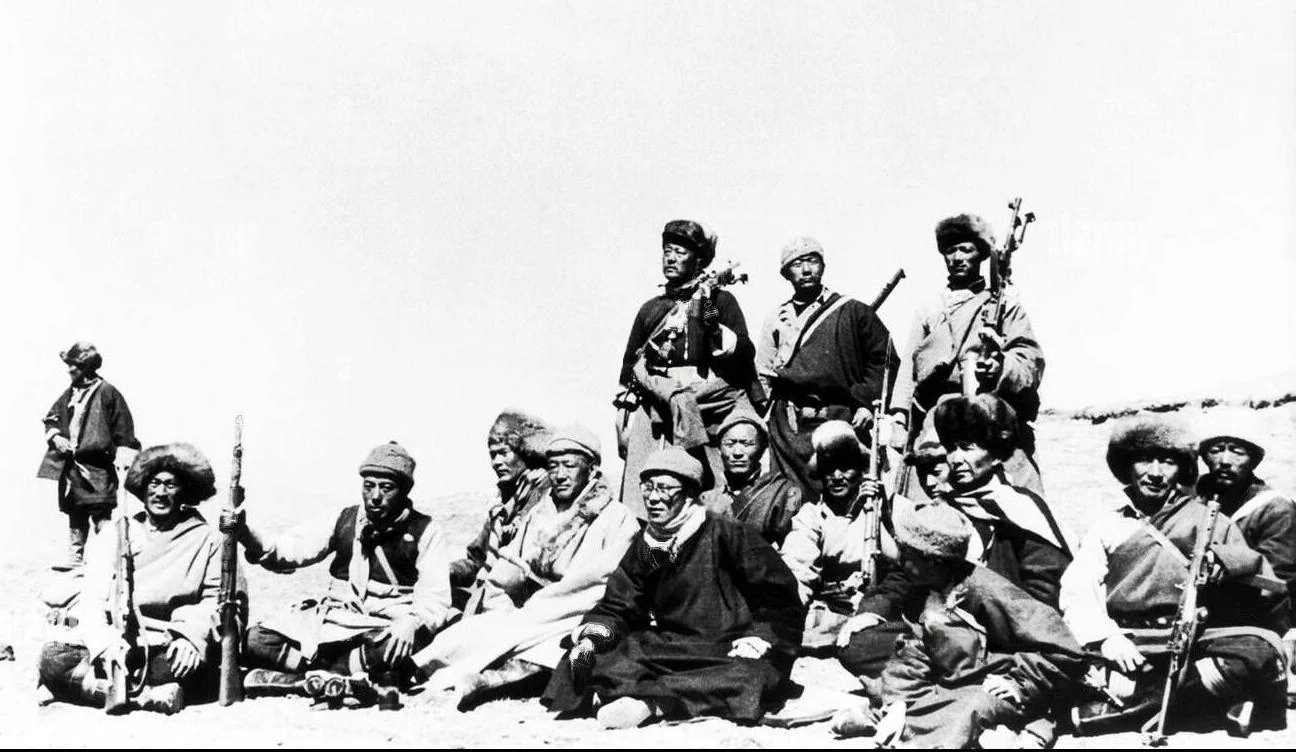While the CIA’s involvement in Tibet was driven by geopolitical interests, for Tibetans in exile, it represents much more.
The history of the CIA’s involvement in Tibet is a fascinating and complex chapter in the broader narrative of Cold War geopolitics. From the mid-1950s until 1969, the CIA played a significant role in supporting Tibetan resistance against Chinese rule. This covert operation, known as the CIA Tibetan program, was part of the United States’ broader strategy to contain the spread of communism.
The CIA’s involvement in Tibet began in earnest in 1957, following the Chinese invasion of Tibet in 1950. The agency provided arms, training, and financial support to Tibetan guerrillas who initially operated within Tibet and later from bases in neighboring Nepal after the Dalai Lama’s escape to India in 1959. This support was part of a larger effort to destabilize the Chinese government and gather intelligence on Chinese military activities.
The Tibetan resistance fighters, many of whom were monks and ordinary citizens, displayed remarkable bravery and resilience. They faced overwhelming odds against the well-equipped Chinese military. The CIA’s support, while crucial, was often shrouded in secrecy and fraught with challenges. The Tibetan fighters were trained in guerrilla warfare techniques, and some were even flown to the United States for specialized training.
The CIA’s involvement in Tibet raises important ethical questions. On one hand, the agency’s support provided a lifeline to the Tibetan resistance, offering them a chance to fight for their homeland and cultural identity. On the other hand, the covert nature of the operation and the geopolitical motivations behind it complicate the narrative. The Tibetan fighters were often left to fend for themselves once the political winds shifted, leading to a sense of abandonment and betrayal.
The legacy of the CIA’s involvement in Tibet is still felt today. The Tibetan struggle for autonomy continues, and the memories of the CIA’s support remain a poignant reminder of the complexities of international politics. While the operation ultimately did not achieve its goal of liberating Tibet, it highlighted the resilience of the Tibetan people and their enduring spirit.
In reflecting on this chapter of history, it is essential to recognize the bravery of the Tibetan fighters and the complicated motivations behind the CIA’s support. The story of the CIA and Tibet is a testament to the intricate web of alliances and conflicts that define our world.
The story of Tibet is one of resilience, courage, and an unyielding quest for freedom. For Tibetans in exile, the CIA’s covert operations in Tibet during the 1950s and 1960s represent a beacon of hope and a testament to international solidarity against oppression.
When the Chinese People’s Liberation Army invaded Tibet in 1950, the Tibetan people faced a dire situation. The subsequent years saw the dismantling of monasteries, suppression of cultural practices, and severe restrictions on self-governance. Amidst this turmoil, the CIA’s involvement provided a crucial lifeline. The agency’s support, which included training Tibetan guerrillas and supplying arms, was aimed at bolstering the resistance against Chinese forces.
For many Tibetans in exile, the CIA’s operations are seen as a symbol of international support for their cause. The covert assistance helped keep the spirit of an independent Tibet alive, both within the region and globally. The establishment of “Tibet Houses” around the world and the vigorous propaganda efforts by the CIA played a significant role in promoting the idea of an autonomous Tibetan government in exile.
The admiration for the CIA’s efforts also stems from a shared struggle against a common adversary. During the Cold War, the United States viewed China’s expansion as a significant threat. Supporting the Tibetan resistance was part of a broader strategy to contain communism. This alignment of interests created a unique bond between the Tibetan freedom fighters and the CIA operatives, united in their fight against a powerful oppressor.
The legacy of the CIA’s operations in Tibet is one of courage and resilience. Despite the eventual cessation of the program in the early 1970s, the impact of these efforts continues to be felt. The training and support provided by the CIA helped forge a resilient resistance movement that, even today, inspires Tibetans in exile to continue their struggle for freedom.
The historical impact of the CIA’s operations in Tibet is multifaceted. On one hand, it provided the Tibetan resistance with the means to sustain their fight against Chinese occupation, preserving their cultural identity and autonomy. On the other hand, it highlighted the complexities of international politics, where geopolitical interests often intersect with humanitarian concerns. The operations also set a precedent for future covert actions, influencing how intelligence agencies engage in similar conflicts worldwide.
While the CIA’s involvement in Tibet was driven by geopolitical interests, for Tibetans in exile, it represents much more. It is a chapter in their history that underscores the importance of international solidarity and the enduring human spirit in the face of adversity. The admiration for these covert operations is a reflection of the gratitude and respect for those who stood by them during one of the darkest periods in their history.
The Dalai Lama’s nephew, Khedroob Thondup is a geopolitical analyst.

